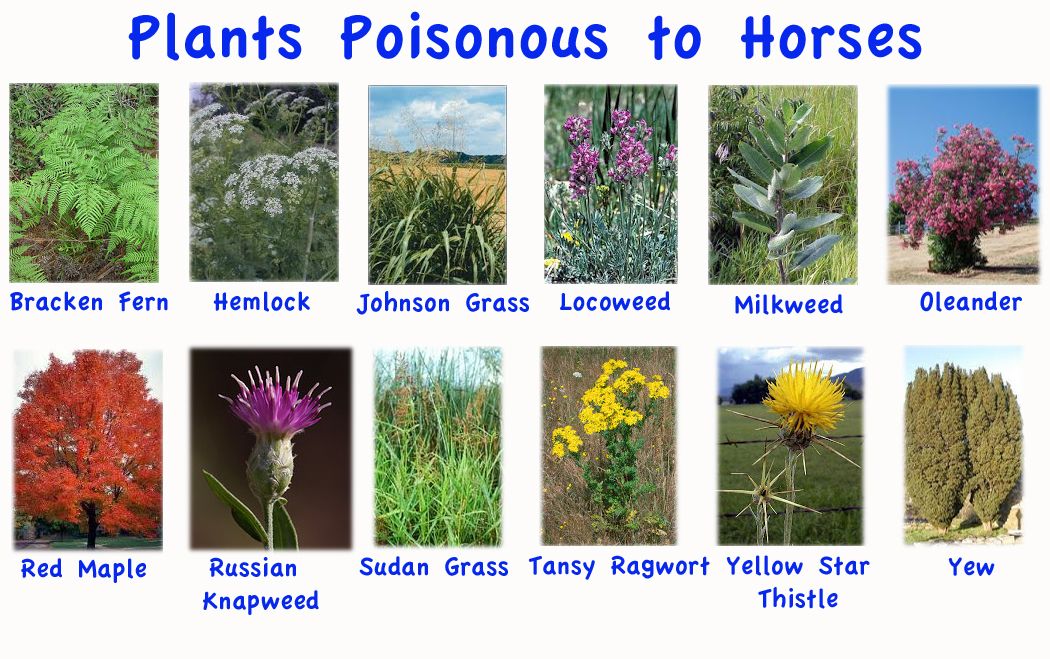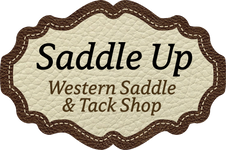Poisonous Plants for Horses - What to Watch for to Keep Your Horse Safe
Posted by Lynnsy Johnson - Saddle Up on Sep 19th 2019
We all know how much horses love to graze, it's simply in their nature. However, if your four legged friend gets a hold of the wrong thing, it could harm or potentially kill them. There are hundreds of toxic plants in Northern American, but only a few are harmful to horses. If you have questions or concerns, you can always contact the US Department of Agriculture Cooperative Extension Office. Here are some of the most common and widespread poisonous plants across the United States:
1. Bracken Fern:
Bracken Fern is on the taller side and can be up to 3 feet high. It is a Perennial Fern with triangle shaped leaves. It is found in wooded areas and wet, open spaces. If a horse gets a hold of this plant, it suffers from neural dysfunctions. This includes depression, blindness, and loss of coordination. If caught early enough, this can be treated by doses of Thiamin.
2. Hemlock:
Hemlock is also a Perennial plant and can grow up to 6 feet tall. It has serrated parsley leaves and small white flowers. You can also find purple spots on the base. It is typically found on the side of the road or open areas. Symptoms if eaten can begin within 1 hour of consumption. Watch for signs of nervousness, trembling, colic, reduced heart rate, heavy breathing, and loss of coordination. Unfortunately, there is no cure and in most cases, it is fatal. If the horses ingested a very small amount, a vet has a better chance of saving the horse.
3. Johnsongrass/Sudan Grass:
These types of grass are tall and have coarse stems. They also have large veined leaves. They are multibranched with seed heads. Johnsongrass and Sudan Grass are most commonly found in the southern area around roads and open areas. The symptoms are similar to cyanide poisoning and can cause fast breathing, convulsions, and constant urination/defecation. Medications can be given to help slow the effects.
4. Locoweed:
Locoweed is short, leafy, and has a single root. It has white or purple flowers and is usually found in dry, sandy areas. They effects of this plant depends on how much was ingested. It can cause the horse to light their legs up highly, staggering, and nodding their head. There is no treatment and the effects are permanent.
5. Milkweed:
Milkweed is absolutely deadly to horses and it is a common plant in Colorado. It is found in dry, swampy areas and has milky sap inside of it that comes out when it is cut or broken. It is narrow and broad leaved. It is a type fruit that is capsule filled with seed born into a silky tuft. The whole plant is toxic. If ingested, this plant causes salvation, seizures, loss of coordination, colic, and death can occur in 1-2 days. If it is caught early enough, the horse has to undergo gastrointestinal and heart treatment.
6. Oleander:
Oleander is found in hot climates and is a tall evergreen shrub. It has large clusters of flowers that can be pink, white, or red. Symptoms occur right after a horse eats this plant and can last several hours. Colic, slow or fast pulse, respiratory distress, and an irregular heartbeat can be caused. Early treatment is key in this situation. To treat, a vet will administer charcoal to slow the toxins. Certain drugs will also be used to stabilize the heart.
7. Red Maple Tree:
This is a common medium size tree with green leaves and red stems. The effects can happen between a few hours or a few days. The leaves are very toxic to horses, but they can recover depending on the amount eaten. The signs to watch for are if your horse starts to refuse food, starts acting lethargic, dark urine, color changes in the mucus membrane, dehydration, or rapid heart beat. Treatment would include IV fluids and a blood transfusion if needed.
8. Russian Knapweed:
Also known as the Yellow Star Thistle, this weed grows to be very tall and is thistle like. It has no spines and small yellow flowers grow inside. On the outside, the flowers can be purple or white and they are typically found in the western region. Russian Knapweed is most commonly found growing on the side of roads and even pastures. If ingested, the damage is permanent to your horse and there is no cure. Effects include signs of clinched face muscles and inability to chew properly.
9. Tansy Ragwort:
Tansy Ragwort is a weed that starts as a rosette and then turns into a multi stemmed flowering plant. After this stage, it seeds and then dies. The flowers on this plant look a lot like daisy flowers and is commonly found growing in pastures. This plant is a silent killer and there is no cure. The horse will show no other signs, but after time passes they get severe liver damage.
10. Yew:
Yew is an evergreen shrub that has flat needle like leaves. It also has red and yellow berries that feature dark seeds. Yew shavings, most of the time, are mistakenly thrown into pastures or they can also grow there. If your horse eats this, they will experience a rapid heart beat, trembling, and in most cases sudden death. Unfortunately, there is no cure.
We hope this information helps you keep your horse safe and healthy!

